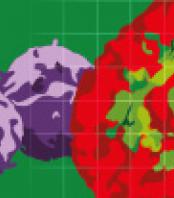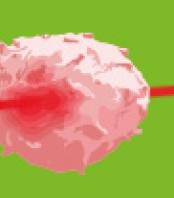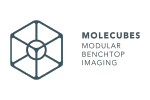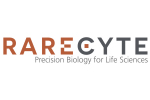Agilent provides xCELLigence impedance-based, label-free, real time cell analysis system and NovoCyte flow cytometers.

Automated microscopy and Spatial Proteomics
Real-time, label free cell analysis
Nano and micro particle analysis

Accelerate to discover
Related topics
Theranostics: From Mice to Men and Back

Jun 25, 2024
Recorded webinar
Presenters: Prof. Dr. Ken Herrmann and Prof. Dr. Katharina Lückerath – Moderator: Hannah Notebaert
Orion 2024 AACR poster: 17-plex single-step stain and imaging of cell Lung Carcinoma

Jun 21, 2024
RareCyte Orion is a benchtop, high resolution, whole slide multimodal imaging instrument. A combination of quantitative...
Hypoxia in the Tumor Immune Microenvironment (TIME)

Jun 6, 2024
Thursday, 11 July 2024, 16:00 CET | 10:00 EST
Zaver M. Bhujwalla, PhD
X-RAD 320 for irradiation therapy during quantifying study for in vivo collagen reorganization

Jun 5, 2024
Quantifying in vivo collagen reorganization during immunotherapy in murine melanoma with second harmonic generation...
Use of MRI and microCT to evaluate gene therapy for the treatment of discogenic back pain

Jun 4, 2024
MRI images were obtained using the 9.4T Bruker BioSpec system, equipped with 40 mm 1H quadrature volume resonator, and...
Exosome-Mediated Delivery of Small Molecules, RNA & DNA for Development of Novel Cancer Therapeutics

Jun 3, 2024
Disha Moholkar of University of Louisville's Gupta Lab
Tuesday, June 11, 2024, 6:30 PM...
Emulate in vivo conditions – introduce shear flow to your experiments with BioFlux system

May 27, 2024
Most research is still conducted in vitro without the presence of flow. We use the BioFlux System to give you the...
High-frequency Ultrasound System For Preclinical Imaging

May 13, 2024
The Prospect T1 is an innovative high-frequency ultrasound system designed specifically for in vivo preclinical imaging...

Feb 23, 2016
In order to demonstrate the flexibility and verstality of the NovoCyte system for assessment of apoptotic events, we show three di fferent assays that can measure apoptosis in response to staurosporine, a broad kinase inhibitor known to induce apoptosis in many cell types.
The fi rst assay uses Annexin V to bind exposed PS on cell membranes for labeling early apoptotic cells and the DNA binding dye, 7-AAD, for labeling late apoptotic cells.
The second assay makes use of the fl uorescent dye JC-1, to measure the loss of mitochondrial membrane potential in early apoptotic cells. JC-1 is cell permeable and aggregates inside mitochondria when membrane potential is maintained, emitting fluorescence in the PE channel.
The third assay quantifi es caspase activity. Probe molecules containing a cleavage site speci c for caspase 3 & 7 are added to cells. When cleaved by these activated caspases in early apoptotic cells, the probe molecules enter the nucleus, bind to DNA, and fluoresce. This enables the direct readout of activated caspases in cells.
Related technologies: Conventional flow cytometry
Get more info
Brand profile
Agilent provides xCELLigence impedance-based, label-free, real time cell analysis system and NovoCyte flow cytometers.
More info at:
www.aceabio.com